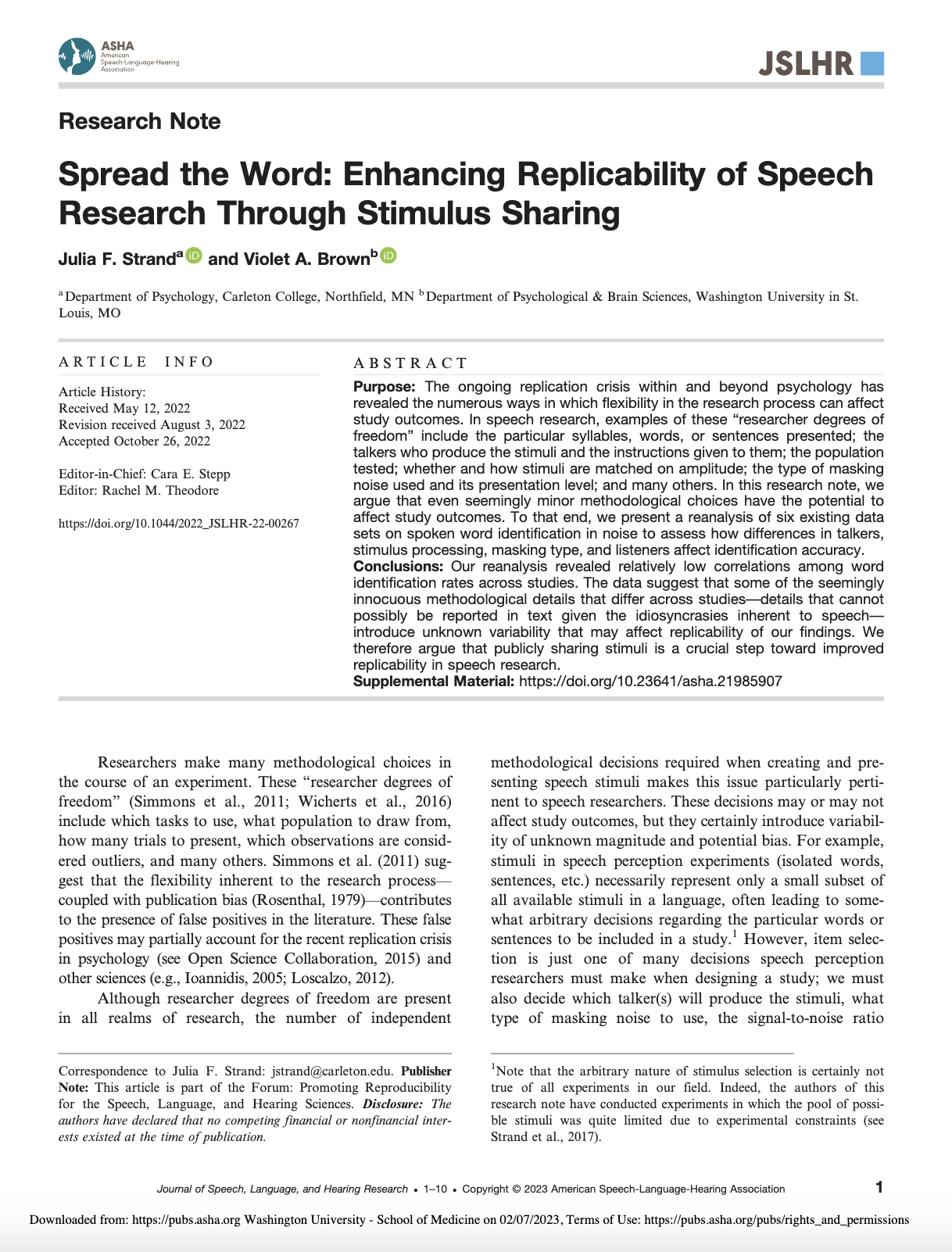
Spread the Word: Enhancing Replicability of Speech Research Through Stimulus Sharing
Purpose: The ongoing replication crisis within and beyond psychology has revealed the numerous ways in which flexibility in the research process can affect study outcomes. In speech research, examples of these “researcher degrees of freedom” include the particular syllables, words, or sentences presented; the talkers who produce the stimuli and the instructions given to them; the population tested; whether and how stimuli are matched on amplitude; the type of masking noise used and its presentation level; and many others. In this research note, we argue that even seemingly minor methodological choices have the potential to affect study outcomes. To that end, we present a reanalysis of six existing data sets on spoken word identification in noise to assess how differences in talkers, stimulus processing, masking type, and listeners affect identification accuracy. Conclusions: Our reanalysis revealed relatively low correlations among word identification rates across studies. The data suggest that some of the seemingly innocuous methodological details that differ across studies—details that cannot possibly be reported in text given the idiosyncrasies inherent to speech—introduce unknown variability that may affect replicability of our findings. We therefore argue that publicly sharing stimuli is a crucial step toward improved replicability in speech research.






